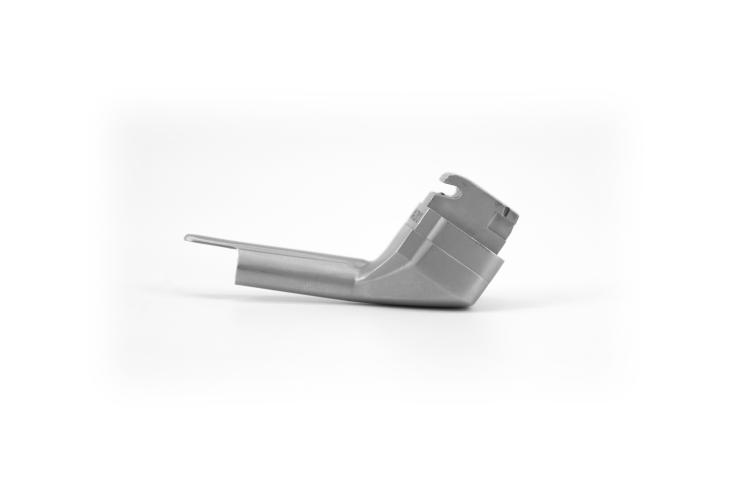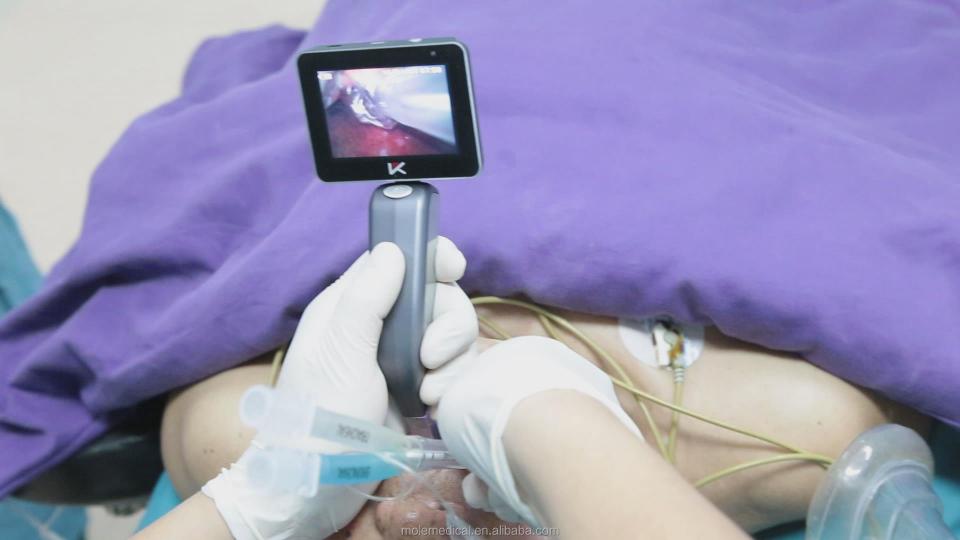Best Miller Blade: What Techniques Ensure Optimal Visualization?
May 15, 2024
The Miller Blade, a fundamental tool in airway management, stands as a stalwart companion to anesthesiologists and emergency medical professionals alike. Crafted with precision, it boasts a slender, straight design, diverging from the curvature of its counterpart, the Macintosh blade. The Miller Blade primarily facilitates visualization and manipulation of the epiglottis during intubation procedures. Its distinguished features make it a valuable asset in scenarios demanding a meticulous approach to securing the airway.
Advantages of the Miller Blade
1.1 Enhanced Epiglottis Visualization
One of the paramount advantages of the Miller Blade in its ability to provide superior visualization of the epiglottis. Its straight design offers a clear line of sight, minimizing the obstruction caused by surrounding anatomical structures. This feature proves especially beneficial in patients with limited mouth opening or those with anatomical variations, where maneuverability within the oropharynx may be challenging.
1.2 Precise Instrumentation
The slender profile of the Miller Blade allows for precise manipulation of the epiglottis and surrounding tissues. This level of control is particularly advantageous in situations requiring delicate maneuvers, such as in pediatric patients or those with cervical spine precautions.
1.3 Reduced Dental Trauma
Compared to the Macintosh blade, the Miller Blade poses a lower risk of dental trauma during intubation. Its straight design minimizes the need for excessive force or angulation, thereby reducing the likelihood of inadvertent contact with the teeth or soft tissues of the oral cavity. This feature is especially pertinent in patients with fragile dentition or those undergoing repeated intubation attempts.
Clinical Applications of the Miller Blade View Latest
3.1 Pediatric Intubation
In pediatric patients, where airway anatomy differs significantly from adults, the Miller Blade is often preferred due to its slender profile and enhanced maneuverability. The ability to precisely lift the epiglottis without applying excessive force reduces the risk of trauma and ensures a smoother intubation process in this vulnerable population.

3.2 Limited Mouth Opening
Patients with limited mouth opening, either due to temporomandibular joint dysfunction or anatomical variations, present a challenge for airway management. The Miller Blade design allows for effective visualization of the epiglottis without requiring extensive mouth opening, making it a suitable choice in such cases.
3.3 Contraindications and Considerations
Despite its versatility, there are certain contraindications and considerations to keep in mind when using the Miller Blade. Patients with a known or suspected difficult airway may benefit from alternative laryngoscope blades better suited to their anatomical characteristics. Additionally, practitioners should exercise caution when using the Miller Blade in patients with cervical spine instability or severe airway edema, as its straight design may impede optimal visualization in these situations.
Mastering the Miller Blade View Latest: Techniques and Tips
4.1 Positioning and Insertion
Proper positioning of the patient is crucial for successful intubation using the Miller Blade. The head should be placed in the sniffing position, with the neck slightly extended and the head elevated on firm support. This alignment optimizes the alignment of the oral, pharyngeal, and laryngeal axes, facilitating easier insertion of the laryngoscope blade.
Once the patient is appropriately positioned, the Miller Blade is inserted into the mouth along the right side of the tongue, avoiding contact with the teeth or soft tissues. Care should be taken to avoid excessive force during insertion, as this can cause trauma to the oral cavity or laryngeal structures.
4.2 Manipulation and Visualization
As the Miller Blade is advanced along the floor of the mouth, the tongue is gently depressed to visualize the epiglottis. With careful manipulation, the tip of the blade should be positioned posterior to the epiglottis, allowing for precise elevation and exposure of the glottic opening.
When lifting the epiglottis, it is essential to use controlled, upward pressure to avoid causing trauma or displacing the airway structures. The Miller Blade straight design provides a clear line of sight to the vocal cords, facilitating accurate placement of the endotracheal tube.
4.3 Troubleshooting Common Issues
Despite meticulous technique, practitioners may encounter challenges during intubation attempts with the Miller Blade View. Common issues include difficulty visualizing the epiglottis, encountering resistance during blade insertion, or encountering anatomical variations that impede proper blade placement.
In cases of poor visualization, adjusting the position of the patient’s head or repositioning the blade may improve the view of the glottic opening. If resistance is encountered during blade insertion, gently withdrawing the blade and reassessing the patient’s positioning can help alleviate obstruction. For anatomical variations such as a large tongue or a prominent uvula, gentle manipulation and retraction of the soft tissues may improve exposure of the airway structures.
Maintenance and Care of Miller Blade View Latests
5.1 Cleaning and Sterilization
Proper cleaning and sterilization of Miller Blade is essential to prevent cross-contamination between patients and maintain optimal performance. After each use, the blade should be thoroughly cleaned with a mild detergent and warm water to remove blood, secretions, and other debris.
After cleaning, the blade should be sterilized by immersing it in disinfectant solution. It is important to ensure that the blades are completely dry before storage to prevent the growth of bacteria or mold.
5.2 Regular Maintenance
In addition to routine cleaning and sterilization, Miller Blade require regular maintenance to ensure longevity and optimal performance. Inspecting the blade for signs of wear or damage, such as bent or dull edges, is essential to identify any issues that may compromise its efficacy.
Blades should be stored in a dry, clean environment away from direct sunlight or extreme temperatures.
Categories
Latest Articles
-2.jpg)
FDA & CE Approved Video Laryngoscope: What Makes It Stand Out?
Introduction In high-pressure emergencies and precision-driven operating rooms, video laryngoscopy is revolutionizing airway management. Mole Medical’s FDA and CE-certified technology replaces tactile-dependent “blind intubation” with real-time visual navigation – enhancing safety, accuracy, and clinical outcomes worldwide. Why Certification Matters Mole Medical’s dual certifications validate its global compliance and performance: FDA Clearance: Rigorous validation of safety/efficacy ... Read more

Mole Medical Showcases Advanced Endoscopy Solutions at CMEF Autumn 2025, Driving Global Partnerships
Guangzhou, China – September 26-29, 2025 – The 92nd China International Medical Equipment Fair (CMEF Autumn) concluded successfully on September 29th at the Canton Fair Complex in Guangzhou. Mole Medical Technology Co., Ltd. (Mole Medical) made a significant impact at the event, drawing global medical professionals and partners to its booth (Hall 2.1, Stand Q24) ... Read more

How to Use Disposable Ureteroscopes Safely and Efficiently
In the field of urology, the application of disposable electronic ureteral-kidney pelvis endoscopy catheters is leading the technological innovation in minimally invasive surgeries. According to the 2024 multi-center research data from China’s urology department, among the over 5,000 surgeries included, the patient group using disposable catheters performed significantly better in key indicators such as operation ... Read more

Breaking Through the Bottleneck of Decontamination On the Irreplaceability of Disposable Bronchoscopes in Emergency Scenarios
During the intense emergency rescue, bronchoscopy technology is the core method for handling airway emergencies. However, the traditional reprocessing cycle of reusable bronchoscopes, which lasts for 60-90 minutes (including cleaning, disinfection, drying, and testing), has become a fatal bottleneck restricting the efficiency of rescue. Mole Medical has discovered that with the clinical popularity of disposable ... Read more

Correlation Analysis of the Duration of One-time Flexible Ureteroscopy for Stone Removal with Postoperative Pain and Hospital Stay
Among the minimally invasive treatment methods for upper urinary tract stones through natural orifices, one-time flexible ureteroscopic lithotripsy (RIRS) has been widely used in clinical practice in recent years due to its avoidance of cross-infection risks and performance degradation associated with repeated use of instruments. This technique involves inserting a thin, flexible endoscope through the ... Read more



